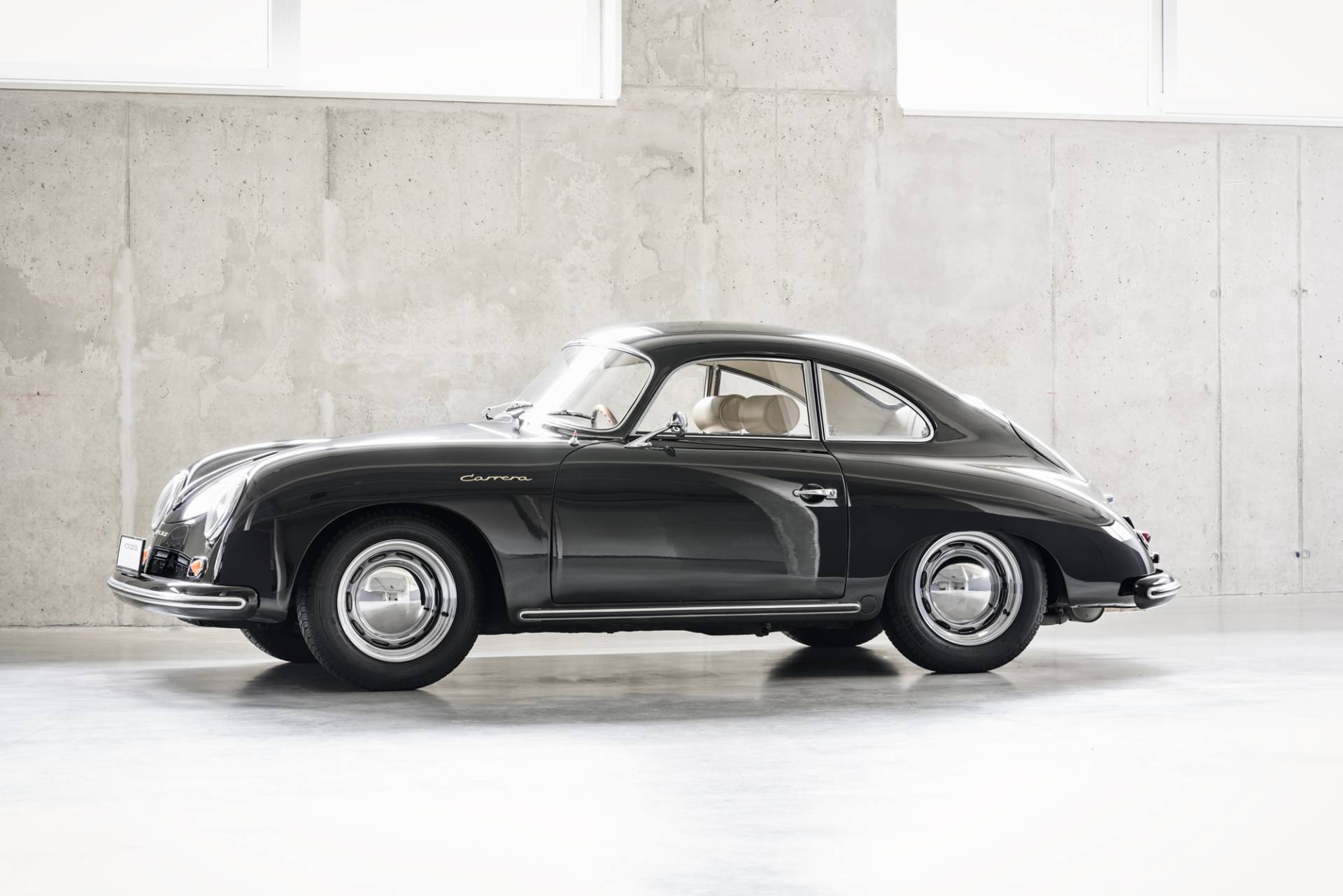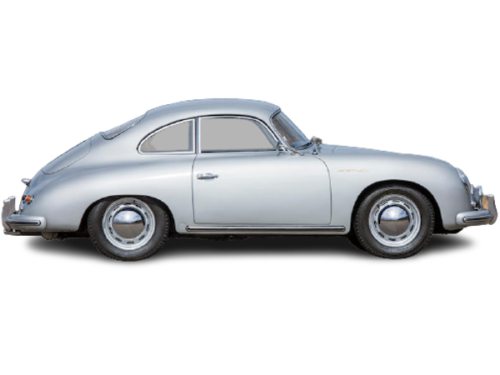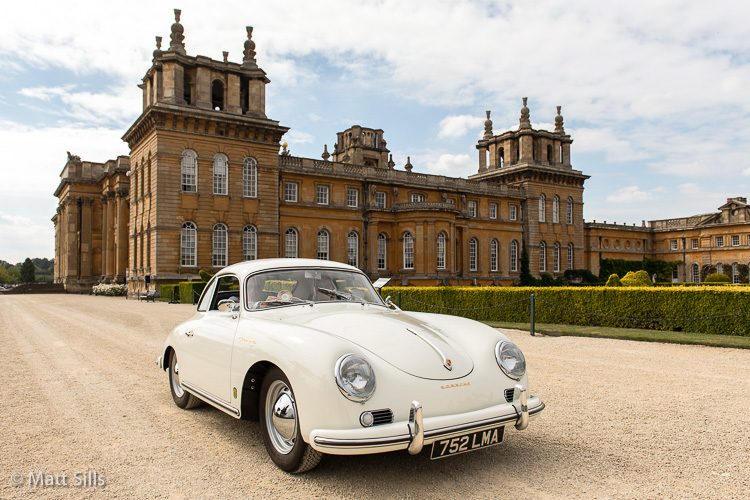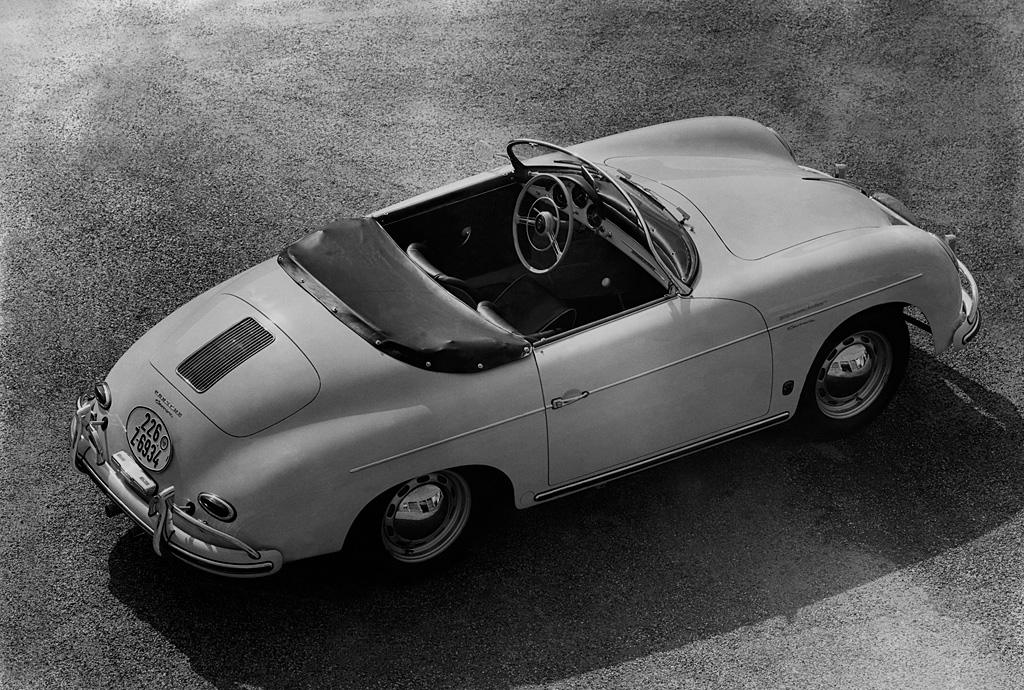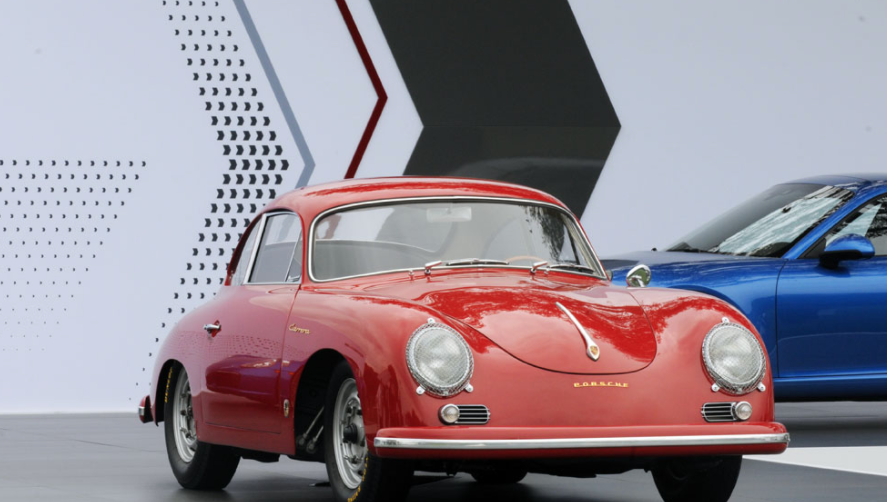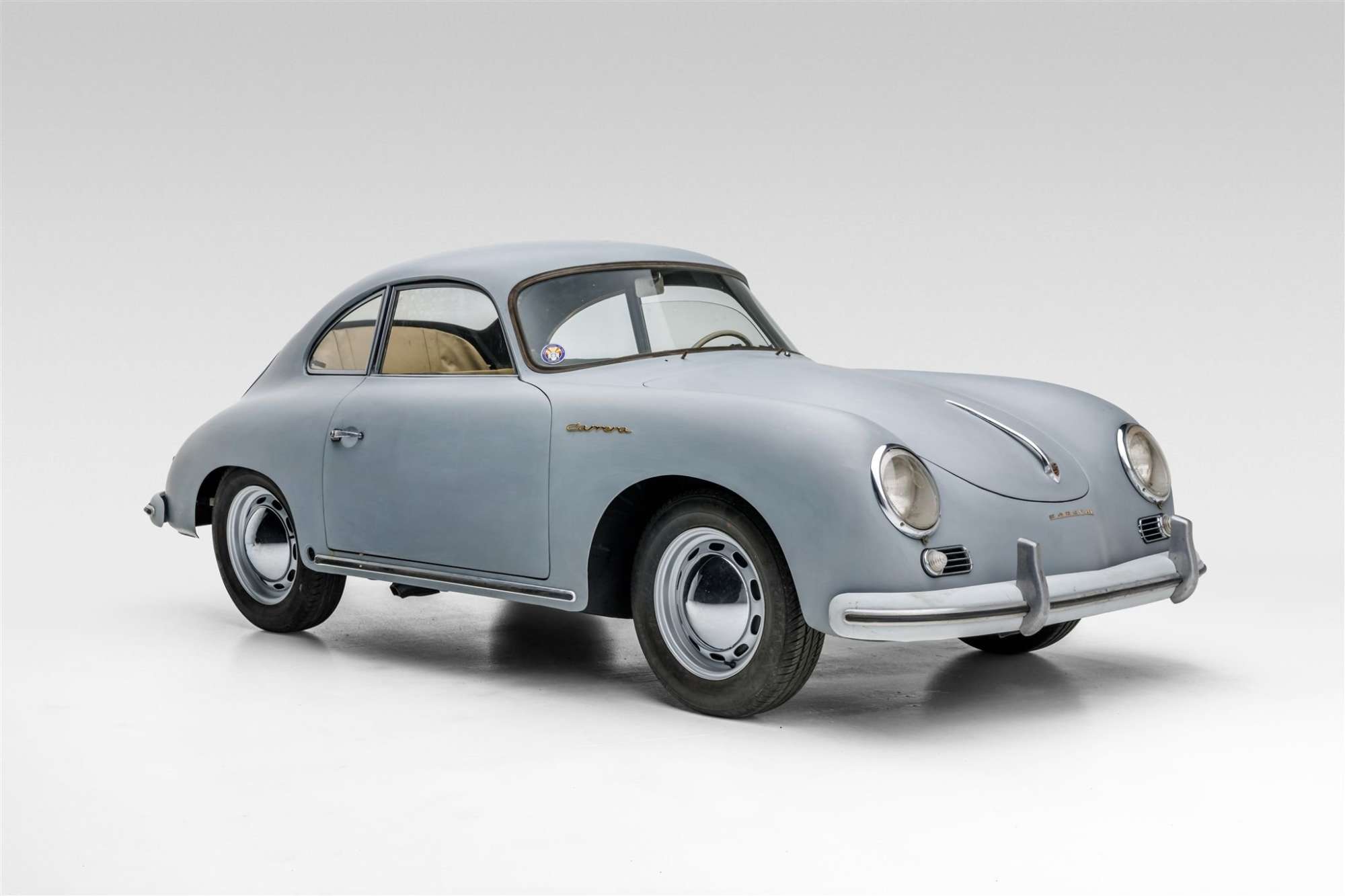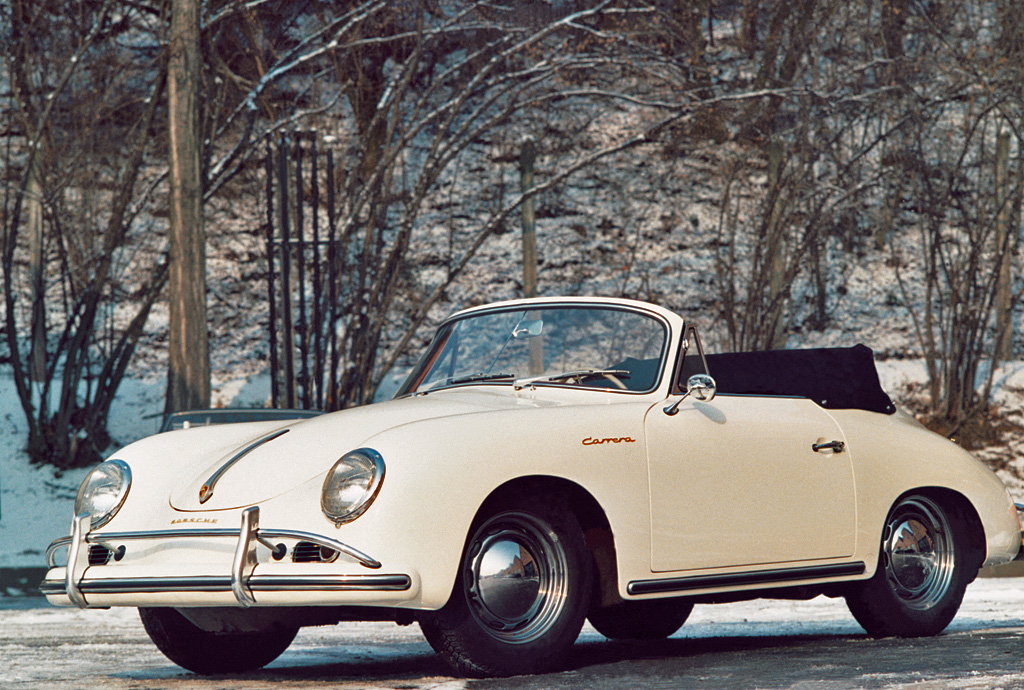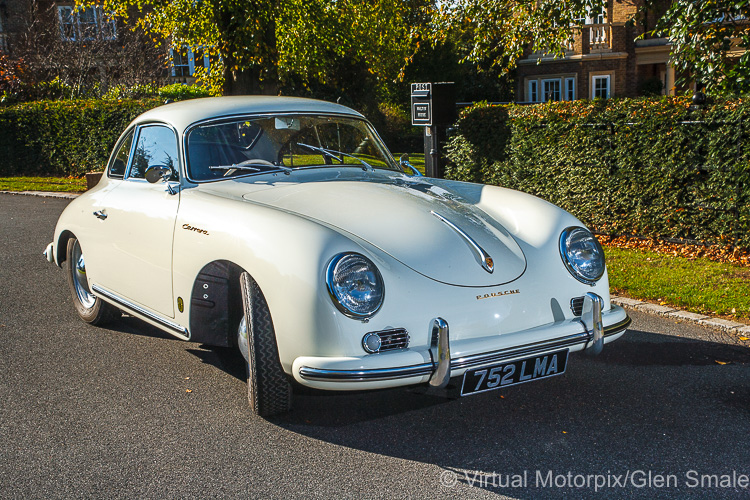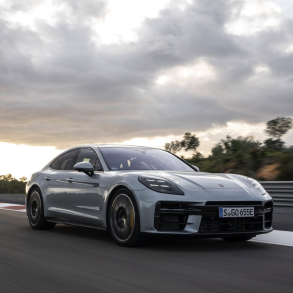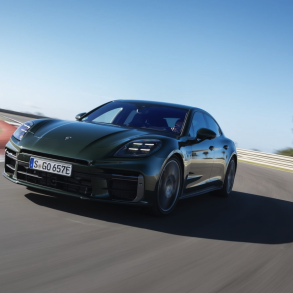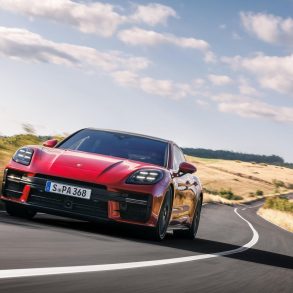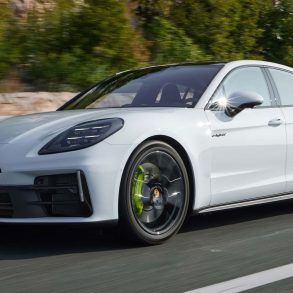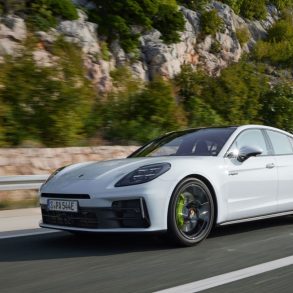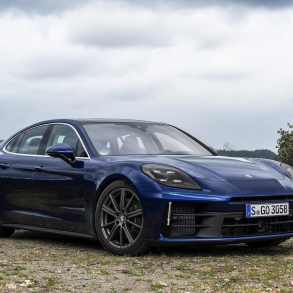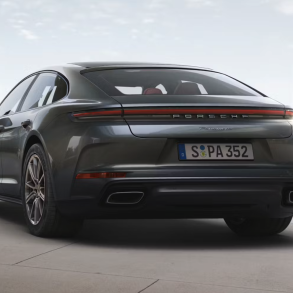1956 – 1958 Porsche 356A/1500 GS Carrera – Ultimate Guide
Coupe / Cabriolet / Speedster
Following the first year of 356A Carrera, Porsche split the model into ‘de Luxe’ and GT specification mid way through 1957. The first de Luxe versions were produced in May and featured the Type 547, four-cam engine from the 550 RS Spyder. It produced 100bhp at 6200rpm and was very capable for the small car.
The first Carrera de Luxe cars were built on the T1 356 body in either Coupe or Speedster form. They were visually identical to the SOHC models except for dual exhaust pipes and gold Carrera nameplates on the fenders and rear deck. New to the de Luxe version was a more plush interior and front-mounted gasoline heater. In 1958 the car was fitted with the T2 body style with louvres on the rear deck and an exposed front fuel filler. Other mechanical upgrades included a larger steering box, stronger front spindles and improved transmission.
Most of the de Luxe cars featured the wide array of Porsche options available in the period. Many cars were fitted with the US-style bumper with its extra bracing. Other options included bucket seats and Sealed-Beam headlights. In May of 1959, the model was upgraded to the Typ 692/2 engine with a slightly larger displacement of 1587cc from a 2.5mm bore increase.
The Speedster
In late 1955 the first regular production Carrera Speedster hit the market as the 1500GS. This used a detuned version of the Porsche 550 engine which was fitted until March of 1958. Like the coupes, these cars used the potent Type 547/1 Flat-4 engine that had a 100 capable bhp.
Porsche priced the 1500GS almost 30% more than the standard push-rod Carrera at 17,500 dm compared to the 1600 Super at 13,000. This increased cost was directly related to the engine which was much more complex with four separate camshafts.
Later into production Porsche began fitting the Speedster with options to go racing. In 1957 the first GT engines were available with 10 additional horsepower. These were generally fitted with the 80-liter fuel tank and 60mm front racing brakes. By 1958 the racing program was taken a step further with optional aluminum panels such as the doors, trunk and hood. Many of the final Carrera Speedsters were fitted with the GT package in 1958.
The Story
With the Carrera nameplate, Porsche had produced their first real production sports car. Named after Porsche’s victory at the Carrera Panamerica, this model mated the potent four-camshaft engine from the 550 RS Spyder into the 356’s unassuming chassis. Specifically, this car used the Type 547/1 engine which was much more free-revving and powerful in the 356A chassis and body.
Porsche described the model in their 1956 American brouchure
“We predict that the new Camera engine by Porsche will take the motoring world by storm. The name “Camera” was given to this great power plant in honor of its victories in the Camera Mexicana in 1952, 1953, and 1954. With the Camera engine, the Porsche production car takes advantage of the FIA Grand Turismo class, and becomes the first production sports car in the 1500 class to reach 125MPH limit, and at the same time remain a comfortable and easy handling touring car. No engine was ever put to such rigorous test as the Carrera. Known during its trial period as the engine which powered the famous Porsche Spyder to victory after victory, the Carrera is in keeping with the Porsche spirit and is the latest in a series which has dominated the scene since its first day on the track. The Carrera may be had in either the Coupe, the convertible or the Speedster.”
Called the 1500RS, the Carrera engine was an air-cooled, four-cylinder engine that was designed by Ernst Fuhrmann to be an out-and-out racing unit. This engine used a complex system of bevels and shafts for the valvetrain, as well as a dry-sump lubrication system. Further distinguishing it was an aluminum block with chrome-plated cylinder walls and twin-spark ignition.
Fuhrman personally motivated the Carrera 356 after fitting his own car with a four-cam. He recalls “In fact I put the first one in my own car… And people around here drove it and said, ‘that’s not so bad!’” This was good news, since four-cam unit had to sit further back behind the rear wheels than the standard engine. Soon after, Ferry Porsche had a four-cam in his own 356A.
However, the idea to install the Fuhrmann 4-cam in to the 356 was not new. Some of the very first cars to come from Gmünd featured this engine for racing. It is reported as many as four Coupes and 14 Speedsters were equipped with it.
Not surprisingly then plans were drawn up to release a performance version of the 356A at the 1955 Frankfurt Motor Show. It used a slightly detuned version of the 550 engine called the 1500GS, but it was internally identical to the 550 Spyder’s with a slight decrease in compression and power. To fit the four-cam into the rear compartment a steel shroud was used. Furthermore the distributors were reversed for access and the new muffler system with twin pipes was fitted.
The only drawback to the system was virtually unreachable spark plugs. The system used two distributors for twin spark ignition. The driver had control of the coils and could test each circuit from the dashboard, using both to aid in cold starting.
To accommodate the new power, larger tires were fitted, as was new instrumentation including an 8,000 rpm tachometer and 180 mph (250 kph) speedometer. Due to the new equipment and an oil tank, weight was increased 105 lbs over the standard model.
When finally released to the public, the car could reach 200 kph (124.3 mph) and reach 60 mph in about 11.25 seconds. As launched at Frankfurt all 4-cam cars were named Carrera after two 550RS Coupes had done so well at the Mexican Carrera Panamerica race.
On the track, the 356 wasn’t light enough to keep up, so it was primarily sold as a road car. In May of 1957, Porsche distinguished the model by splitting up the Carrera nameplate offering both a Carrera de Luxe and Carrera GT version. The de Luxe was fitted with a heater and smaller 30m carburetor venturis for a better torque curve. At the same price, Porsche offered the GT version with different muffler that had no heater and little deadening. It was also equipped with a larger 21 gallon fuel tank and Porsche 550 front brakes.


